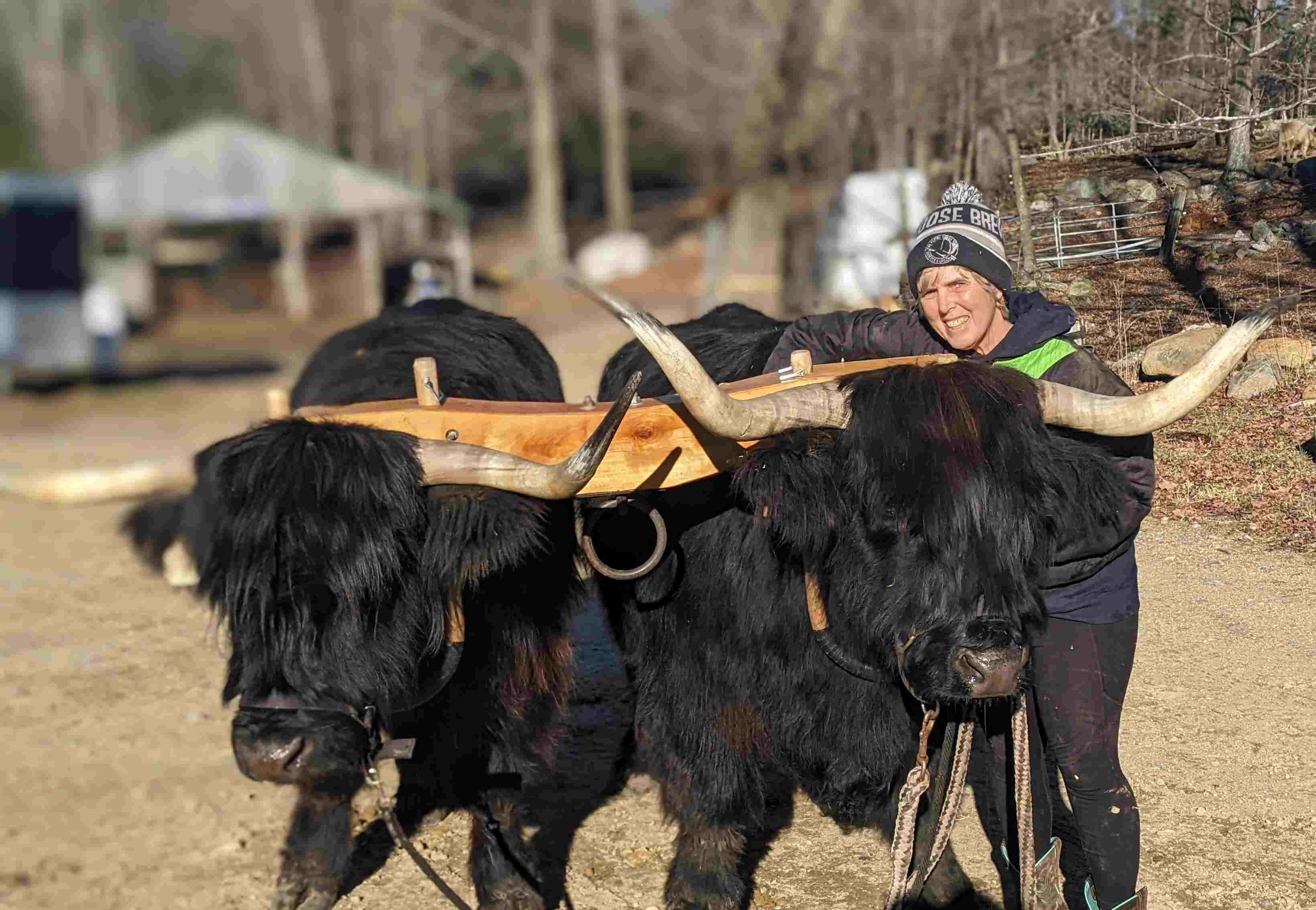The Legend of The Apple Tree
posted on
April 26, 2021

Mike Polk, from Farmington, trims the 100-year-old “happy” apple trees on Miles Smith Farm.
There is a resident that has lived on the farm longer than anyone else. She is older than most humans and started life over 100 years ago as a happy accident. She is an apple tree that stands in our backyard. Flanked by two other apple trees, almost as old, this trio was planted in the early 1900s by Sarah Whitehouse, the farm's owner.
This grand dame of trees has a story to tell. The legend goes: Over the 30 years that Sarah lived on the farm, she would "take in" children of friends and relatives, giving them a home if they needed one. Others would just visit. One of these children, former Loudon Selectman Ray Cummings, told me about sitting in Aunt Sarah's kitchen (now my kitchen) surrounded by the aroma of baking muffins and apple pies.
The Legend
She was also a midwife, helping babies into the world in Loudon and Canterbury, traveling as far as her cart and stylish Morgan horse would go. As was bound to happen, one of the birthings went badly, and both baby and mother died. Upon arriving home, in a fit of frustration, Sarah threw down her driving whip, a twitch from an apple tree. It stuck in the ground, sprouted roots, and eventually produced apples. Pleased with the tree, Sarah planted one companion on each side to provide more apples for her famous pies. I'm no botanist, so I can't tell you whether my trees are technically male or female. But given their ability to bear fruit, they're female to me.
When I moved to the farm in 1972, these three gals were surrounded by forest and struggling to live. With the help of a chainsaw and youthful muscles, my husband and I released them from the confinement of the forest, but they were in bad shape. Twenty-five percent of Sarah's twitch tree was dead limbs, and the others had "sucker" sprouts growing from the branches so densely there was no room for the apples. Back then, there were eight or ten other apple trees hugging the nearby ravine. With split trunks and mostly dead branches, those trees died.
A Surgeon
With the remaining three seemingly at death's door, we called in a tree surgeon. The arborist cut here and there, opening up the trees and shaping the crowns, giving them a form any mature apple tree would be proud of.
The surgery worked, and some years the gals produced hundreds of apples that dropped into the pasture they bordered, and the cows feasted. Other years, the trees made less, but each year I hired an arborist to trim and shape to keep them vigorous and healthy.
Buzzing Bees
In spring, thousands of bees swarmed over them. I'd sit below, looking up into branches, watching busy bees flitting from blossom to blossom. The hum of the bees made the trees seem to purr like contented cats, stretching their paws in bliss as the pollination ritual progressed. Other years, with fewer blossoms, the old tabbies did not purr quite as loud, but they survived.
Then in 2016, I could not find anyone to prune – until this year. While reading the N.H. Farm Bureau Communicator I learned about Mike Polk, an arborist from Farmington. I called Mike, who said he would help.
Happy Trees
Although I feared they'd gone too long without professional attention, Mike said, "These are healthy trees and need very little pruning. The farmer who planted them put them in the perfect spot – on a hill with good drainage, south-facing and protected. These are not only healthy trees; they are happy trees."
Wow, happy trees! I knew I had happy cattle, but happy trees, too. My cup runneth over.
Backyard Trees
Mike climbed into each tree, strategically cutting so more light could get into the middle of each. He explained that typically "backyard trees" like ours produce an exceptional crop one year and fewer apples the next. I don't know the breed of these old gals, but I love them, and so do my cattle.



